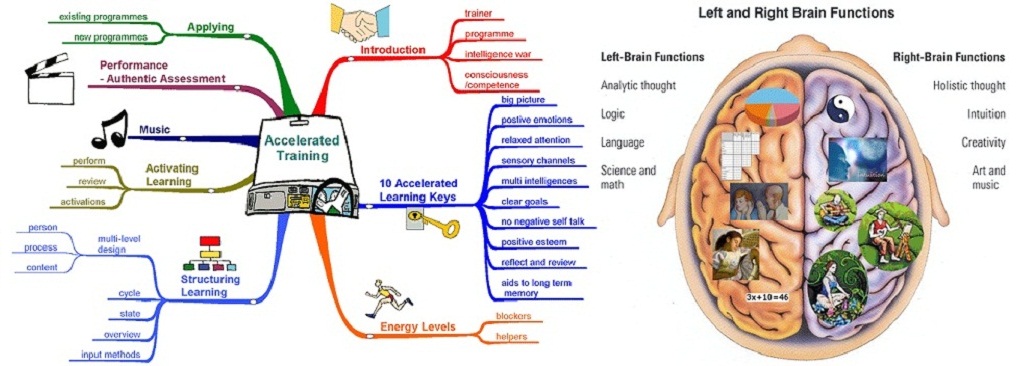Accelerated Learning in Action
Discover what is happening in the world of Accelerated Learning. Read about successful programs and find out which organizations are using AL to impact the quality of learning around the world. Come back from time to time to see what we've added to the list below.
Helping your Children LearnIn the fall of 2004, The American Protestant Church in The Hague in the Netherlands offered a course entitled, Helping your Children Learn, for parents, grandparents, teachers, and friends led by Mary White Kennedy and Charles E. Kennedy.This course is a unique design of 6-sessions to help build understanding around the learning needs of children and to provide an opportunity to think of ways that we as parents, grandparents and friends can help the children in our lives experience learn in new ways. We had 12-15 people ranging from late 20’s to the mid 70’s. Each participant was either a parent or a teacher or touched children in some way. Three of the participants not only had children of their own, but also were teachers in the American or International school in The Hague. The oldest participant taught retired men how to use the computer on the Internet so he was particularly interested in how to make his teaching sessions more relevant, engaging for “his older learners”. Mary White Kennedy, Shell, Netherlands |
Intercultural DevelopmentOver 1500 globally people have gone through a two day intercultural program co designed by Nipporica Asso. and Delphin Intl' for use in Shell. The Shell leader responsible for the development of the program intentionally decided to design a program based on AL principles and methodology.Participant feedback on the program has been outstanding making this one of the top development programs offered in Shell. Participants interviewed 2-3 months after the session share stories of how their knowledge and skills have impacted their own performance. Participants remember the key learnings of the program because of the AL design and facilitator delivery. Facilitators are trained on AL principles and spend time understanding how each module was intentionally designed to increase learner retention. Bonnie Roelofs, Shell, USA |
Electrical Distribution System of the Nuclear PlantWhen learners arrived, they found the classroom totally empty of furniture, with the exception of a few tables along the walls. They were asked, as a group, to build the electrical distribution system of the plant on the floor as one giant grid. The necessary documentation for doing so was on one of the tables.At first, learners were hesitant. This was certainly a departure from the traditional classroom they were used to in their corporate culture. But their hesitancy vanished quickly as they organized themselves for the task. Everyone was active as the grid gradually took shape on the floor. Once the it was completed, the class used it as a giant visual aid as the instructor presented them with problems to solve and "what-if" scenarios to discuss. They could even send individual learners through the grid as electrons to test their understanding of the electrical flow and what happens when outages occur. The learners loved it. Dave Meier at Wisconsin Electric, USA |
English as a Second LanguageThis was a six week ESL class for Baker Concrete Construction Company in Houston , Texas. The Baker workforce has a large percentage of Latin American workers. They recognized a compelling business and social need to provide English training for them.Traditional language training involves studying about the language. The Accelerative Learning approach aids with “acquisition” instead of “rote learning.” The design included development of a six week curriculum and two textbooks written in a lively drama format, filled with concrete construction vocabulary and situations for conversational re-enactment and roleplay of on the job and real life scenarios. The main purpose of the text is to introduce 1500-2000 new words every 3 weeks of training. Embedded in the story was concrete construction terminology necessary for the students to communicate effectively on the job. The custom designed text also stressed on the job safety, teamwork, customer relations, and basic business philosophy around quality, productivity, and costs. The information for the text and curriculum was obtained through research, and interviews with Baker Construction coworkers including Laborers, Superintendents, Project Managers, two Vice Presidents, the HR Director in Houston, and Dan Baker. They provided support and subject matter expertise on a regular basis. The class consisted of 16 students. It was held on site at a Baker facility in Houston July 14 th-August 22 nd. They met for six hours a day from 1pm-7pm Monday through Friday, after working in the morning before class. Two facilitators taught the six week class. There were three tests administered before class started, after three weeks, and after six weeks. These tests helped determine reading, writing, and oral proficiency. With the exception of two students, the class was composed of non-speakers or those that were considered novice-low, a level in which one can produce isolated words. The total student days were 480. The attendance rate was 99.4 % with the only absences due to family emergencies. The class focused on speaking and listening comprehension. A jump in 2 to 4 levels was achieved by the entire class, with leaps in reading and writing as well. The ESL class for Spanish speakers was developed and delivered by Karen Gentry-Sizemore, Jay Gorham, and Danny Perez. Ruby Aldana translated the AL text. |
